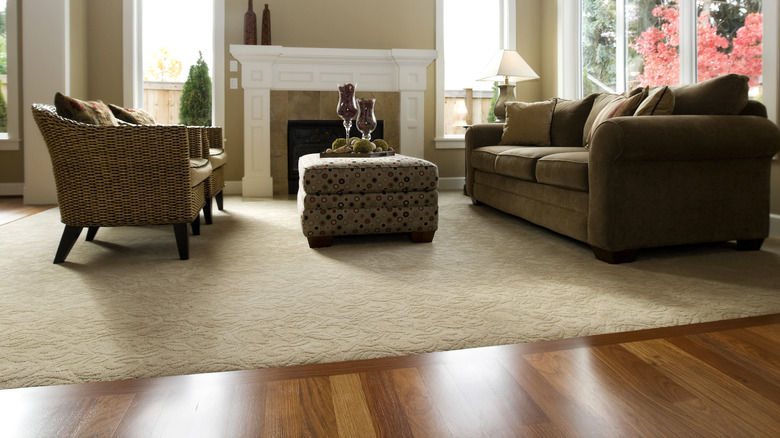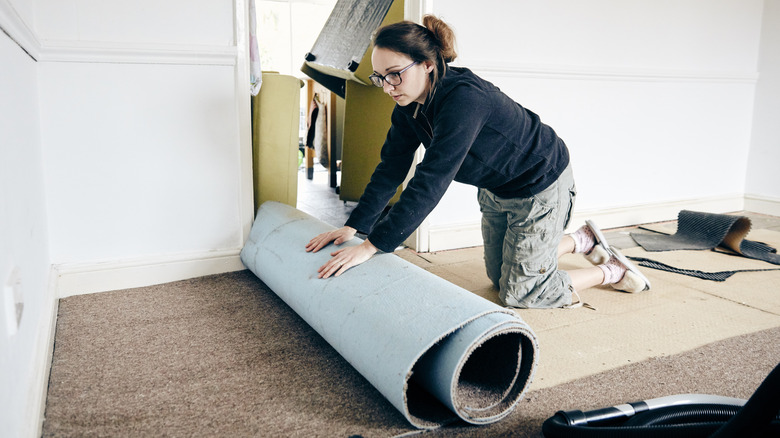What To Know Before You Consider Installing Hardwood Over Carpet
You've found the home of your dreams, except for one thing: it has carpet instead of hardwood floors. You can always put a rug over a wood floor you hate, but can you do the opposite and install hardwood over carpet? It's possible, but probably not a good idea.
Installing hardwood flooring costs an average of $7 to $25 per square foot including labor, so choosing whether to make the switch or keep your carpet is a major decision. There are pros and cons of both wood floors and carpet to consider — for example, wood is easier to keep clean, but carpet is quieter and more affordable.
You might hope to save money and time by leaving old carpet in place and installing wood floors on top, or perhaps you're renting and can't rip up the carpet. Unfortunately, you may not get smooth, stable wood flooring unless you remove the carpet first. Carpets are typically not 100% flat across the entire room, and even minor bumps and dips will prevent the wood from laying evenly, which can lead to creaking, shifting, or other issues. Additionally, you may trap dust mites, mold, and mildew underneath the wood.
The same is true for laminate. As a temporary solution, you may be able to install vinyl flooring or floating laminate floors over carpet. This works best with low-pile carpets; if you have high-pile carpet, you'll need to add plywood underneath. If you want permanent wood floors, removing the carpet is an essential first step.
Prepping to transition from carpet to hardwood
There are many different hardwood flooring materials and installation methods to choose from. You may need to hire a pro to install your hardwood flooring, but the brave or experienced can tackle it as a DIY project. No matter which path you take, removing the old carpet and preparing the subfloor are key steps for success.
To remove the carpet, use a pair of pliers to lift the edges away from the wall, then work the rest of the carpet loose. You may need to cut the carpet into strips with a utility knife and roll them up one at a time as you go. Also remove any padding, staples, or tack strips underneath the carpet with a scraper, utility knife, or pliers.
The carpet may have been installed directly over the subfloor, or there may be an additional layer of flooring in between (like older wood floors), which you can either leave or remove depending on its condition and your preferences. If you're down to the subfloor, it's important to assess its condition before you move forward with installing your new floors. (Plus, who knows the next time you'll get the chance?) The subfloor should be dry and stable. Now is the time to address any debris, damage, loose pieces, bumps, squeaky spots, or out-of-level areas. You may also want to add a vapor barrier to prevent moisture from damaging the new floors.

